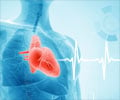In a recent study, researchers from Germany examined the effect of a changing heart rate on myocardial oxygen tension, and found a significant relation between myocardial pO2 and heart rate.
The influence of heart rate on cardiac output, oxygen consumption, and myocardial activity has been widely investigated. However, the influence of heart rate on myocardial oxygen tension (pO2) remains unclear. Since the introduction of flexible pO2 micro catheters to measure partial oxygen tension in a working muscle, it is possible to investigate the influence of heart rate on myocardial oxygen tension.
In a recent study, researchers from Germany examined the effect of a changing heart rate on myocardial oxygen tension. The study was done also to evaluate a possible threshold value for an ideal heart rate at which myocardial oxygen tension (pO2) is optimal. Furthermore, the time frame of response of pO2 to a change in heart rate was analyzed. These questions were addressed in an animal model using flexible pO2 probes.For the study, to be published in the journal Microvascular Research, intraoperatively, a flexible pO2 micro catheter was positioned in the mid-myocardium of 8 male farm pigs. The heart rate was varied via an external pacer from base rate up to fibrillation and the corresponding myocardial pO2 was measured.
The researchers found that within 2 min, the myocardial pO2 adjusted to a change in heart rate. In this animal model, an optimal myocardial pO2 was observed at 109 bpm. A further increase in heart rate led to a decrease in myocardial pO2. Each change in heart rate resulted in a corresponding change of pO2 within roughly 2 min. When the heart rate was reaching the level of a fibrillation, pO2 dropped to zero.
Left ventricular ischemia with subsequent necrosis of myocardium is the most important factor for postoperative myocardial insufficiency leading to death or myocardial dysfunction after open-heart surgery. Myocardial oxygen tension is depending on several factors such as coronary perfusion pressure, metabolic need, heart rate, and tenacity of the coronary vessels. An increasing heart rate starting from a base rate results in an increasing cardiac output but to a higher oxygen consumption also. However, up to now, it remained unclear how partial myocardial oxygen pressure relates to a change in heart rate.
In this study, in young healthy pigs – with a normal blood vessel regulation and the pharmacologic and experimental conditions used in this study – a significant relation between myocardial pO2 and heart rate was observed. In a working, fully loaded heart, fibrillation resulted in a partial oxygen tension of around zero and death of the animal.
Medindia on Chest pain: Chest pain is a common symptom which can be caused by many different conditions. Some causes of chest pain require prompt medical attention, such as angina, heart attack, or tearing of the aorta.











